Student:
Peter Lahiff
- Seaweed aquaculture is increasing in scale and sophistication globally and represents a potential low-carbon, renewable, nutritious source of food for human societies. Algal mariculture has traditionally been practised in East Asia but has only recently expanded into other regions, and as such, studies of its impacts on wild marine communities are scarce. The increasing interest in algal cultivation creates an opportunity for in-depth studies to be carried out on its potential benefits, drawbacks and complications.
- The role of algal mariculture in habitat provisioning is assessed. Ropes seeded with algal propagules are compared to ropes without to investigate the impact of this treatment on biotic communities. These ropes were designed to mimic the conditions under which macroalgae are commercially grown. Statistical comparisons are performed to detect spatial and temporal variation in epifaunal communities associated with cultivated algae and ancillary structures.
- Results of the factorial analysis showed a strong numeric response between time of harvesting and diversity of faunal communities, and a weaker response between treatment and diversity. The results of the multidimensional analysis demonstrated a distinct shift in community composition with time. A high abundance of the juveniles of certain species indicate that the farmed seaweed is being successfully used as a nursery habitat.
- Synthesis and Applications: Recommendations are made for the enhancement of habitat provisioning and recruitment of fished species by commercially grown macroalgae.
promotor/supervisor feedback
nothing yet




